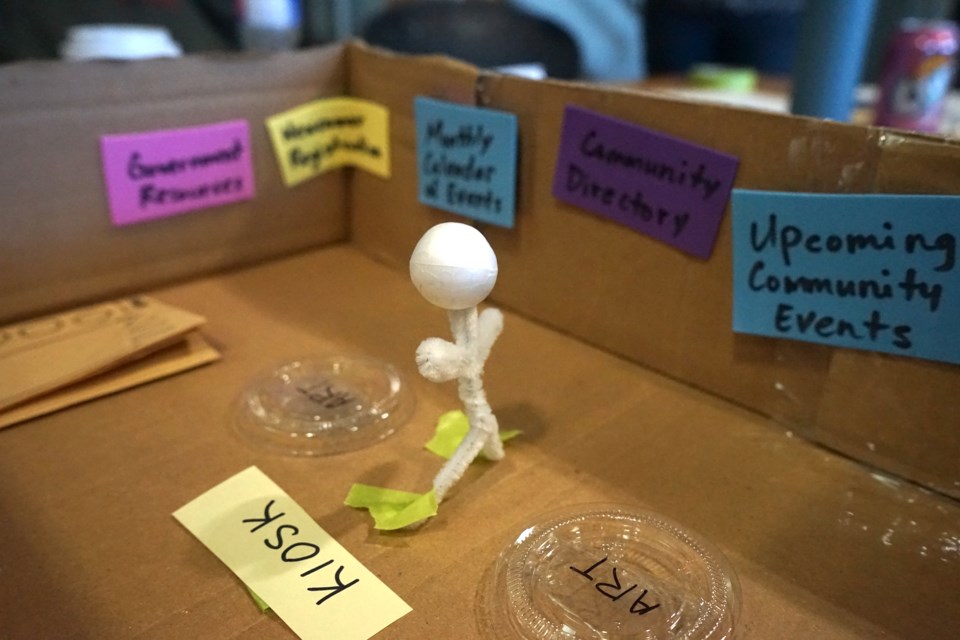ATHABASCA — Locals participating in the Athabasca Design Lab are seeking input from community members at large as they near converting abstract ideas generated over eight months of sessions to near-concrete prototypes.
On May 16, the dedicated group of high school students, business owners, and everyday Athabasca-area residents involved in The Social Impact Lab Alberta’s (SIL AB) community design project will present mock-ups of their work thus far for what may be the most important aspect of the process: testing.
“I want you to start thinking about how you would share this with the community,” said Kelsey Brown, project designer with the SIL AB. “When we’re testing in the community, we want to … really get people’s blank-slate impressions.”
Since October, designers have been gathering monthly in the ARC building at Athabasca University with the common goal of finding a grassroots solution to one social issue prevalent in the region.
After four sessions, plenty of coffee, and a plethora of colourful sticky notes, residents voted to select communication as the issue to solve — a topic not included in the original array, which saw affordable housing, access to mental health supports, and communal transportation as prevalent issues in the community.
Although communication wasn’t identified as an issue by initial community research last fall, the theme kept emerging throughout discussions about how to better the community.
“When we began to sort and theme the information we gathered from our empathy interviews, we noticed that certain themes were woven throughout all the larger social issues we had identified. One of these themes was communication,” said Brown in a Jan. 25 email.
“They noted that it could be difficult to find housing if you didn’t have relationships with landlords or have connections in the community, that there is no central place to find information that everyone in the county uses,” wrote Brown.
“It’s difficult to learn about what resources are available, and even seeking mental health support is difficult in a close-knit town where it’s difficult to remain anonymous. We also heard that people often don’t hear about events in their community before they occur, leading to a sense of disconnection.”
Community-led solutions
After landing on their topic, designers analyzed ideas implemented around the world to improve communication, such as a community coalition already in use in Alberta, the old-school concept of a welcome wagon, and cultural habits built into life in Eastern countries that foster communication and belonging.
Ideas generated in February were narrowed down and refined in March and April sessions, and for their May 2 second meeting, designers focused on further shaping and translating their solutions to reality.
Prototypes were created for digital information kiosks, a public hub or gallery space, a community coordinator, and small but mighty grassroots events. Participants tested each idea and gave feedback, ranging from what they’d like to see more of to increased opportunities for accessibility.
Following the first round of in-house testing, designers again assessed their solutions and how they plan on collecting and assessing community feedback. Official community testing, which will begin with the May 16 session, will put participants one step closer to the $10,000 seed money grant to see the solution implemented.
Community testing will be held in the Athabasca University ARC Building May 16 from 9:30 to 11 a.m. Anyone interested in participating in testing or more information on the design lab can contact Brown via email at [email protected].
Subsequent testing windows will be available for community members unable to attend the May 16 session.



